Are you ready to make cannabis butter or oil but are stuck wondering how much to use? This cannabis flower-to-oil ratio guide will help you decide how much so you end up with a perfectly potent end product suited to your tolerance and needs.
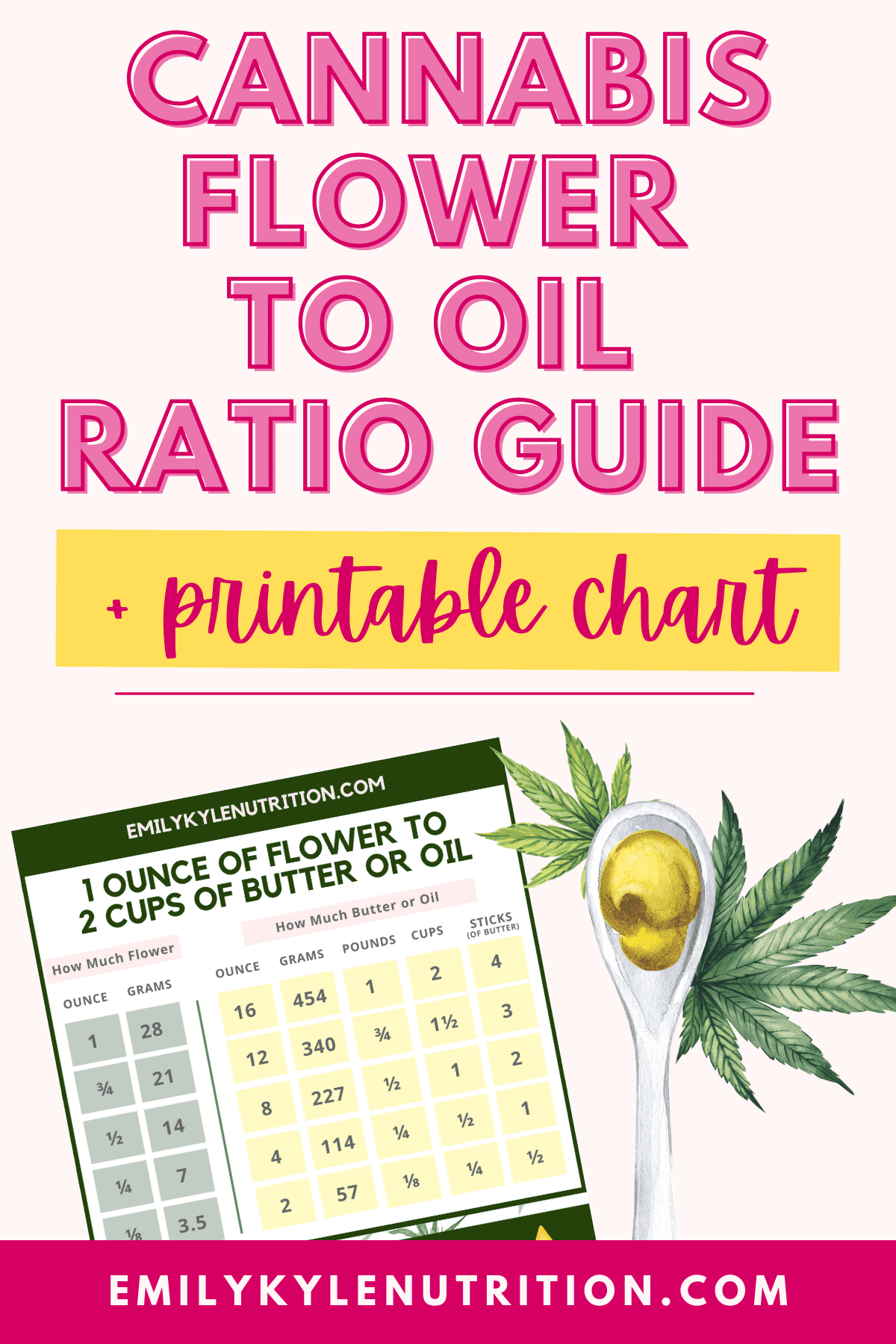
Article Features
- An option to download and print both the 1:1 and 1:2 chart
- How to determine how much flower, kief, or trim and how much oil or butter to use in your infusions
- Want to skip the work? Have my best-selling Bliss Cannabutter delivered straight to your door – now shipping across the US!
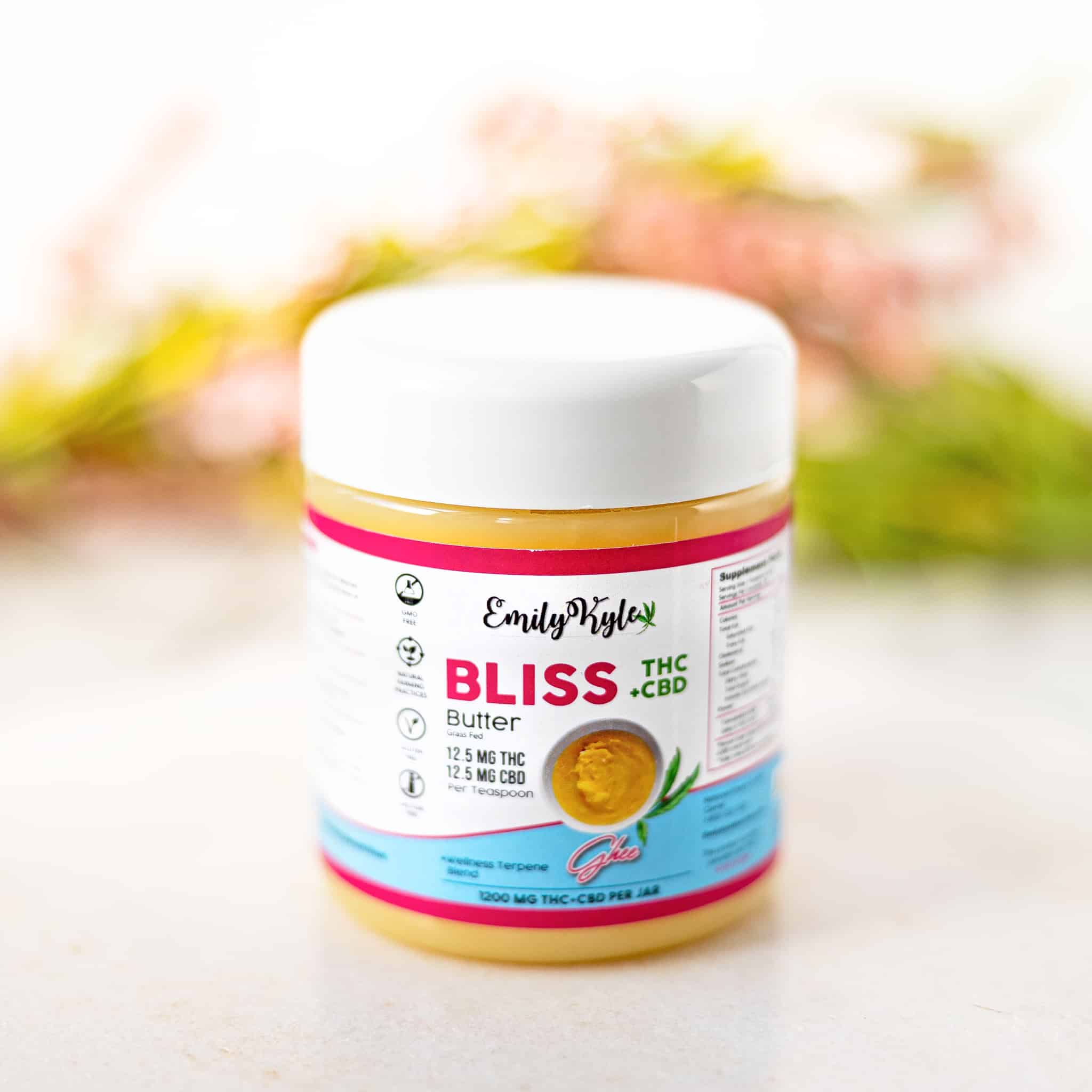
Why You Will Love This Guide
Edibles are a great way to consume cannabis to relieve unwanted symptoms, but if you’re buying them from a dispensary, the costs can add up.
That’s why so many of my Well With Cannabis Community members love to save money by making edibles at home.
This can be done with a simple infusion of cannabis flower and fat like butter, coconut oil, or olive oil to make weed butter or weed oil.
But the same question is always asked: how much cannabis and oil should I use?
It’s a great question because how much of each you decide to use will impact the potency of your final product.
This guide will discuss determining the perfect flower-to-oil ratio for your infusion to get your chill on and save money!
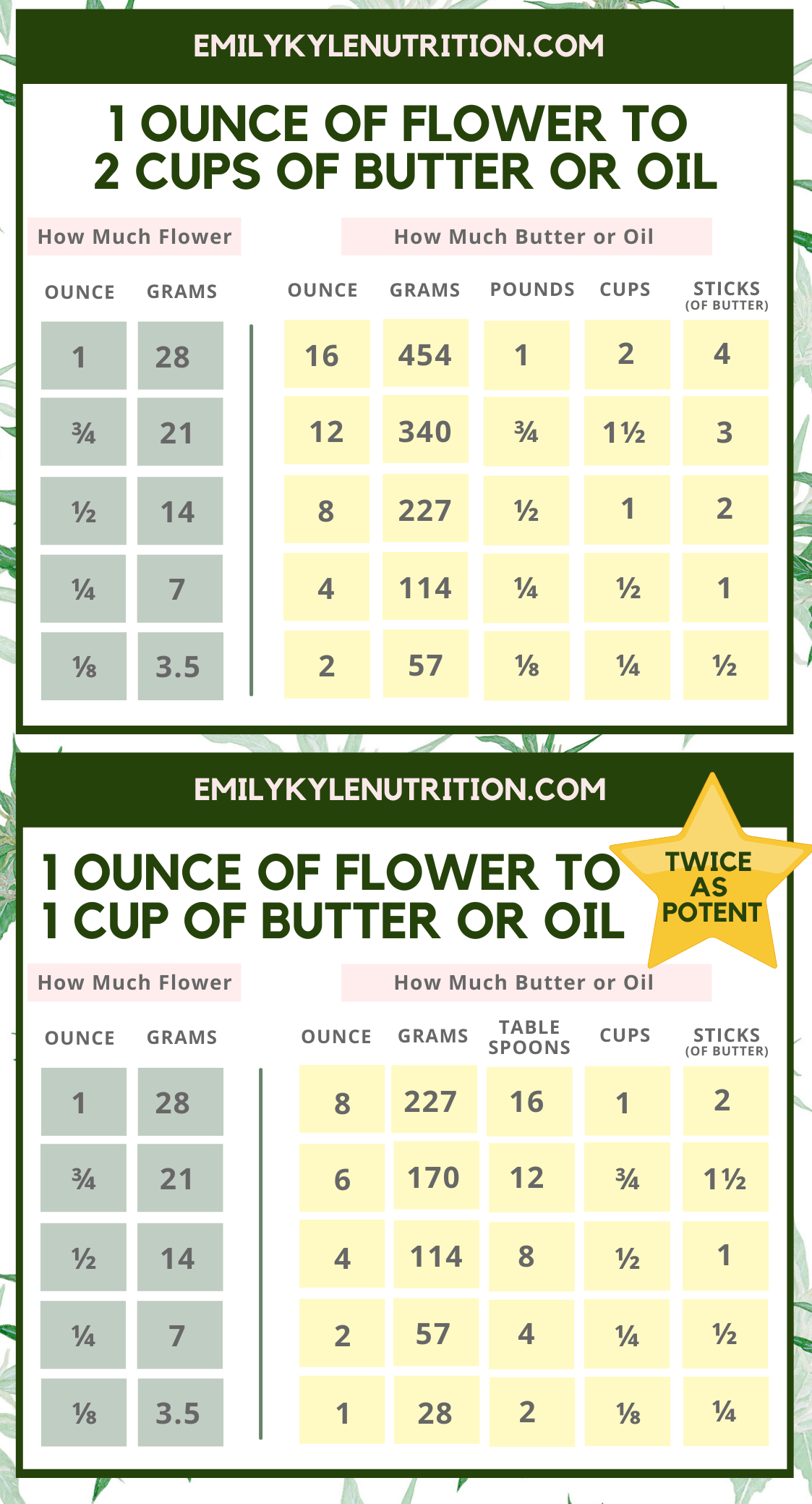
Watch the Video
Prefer to watch or listen to this post instead? Click to watch the video.
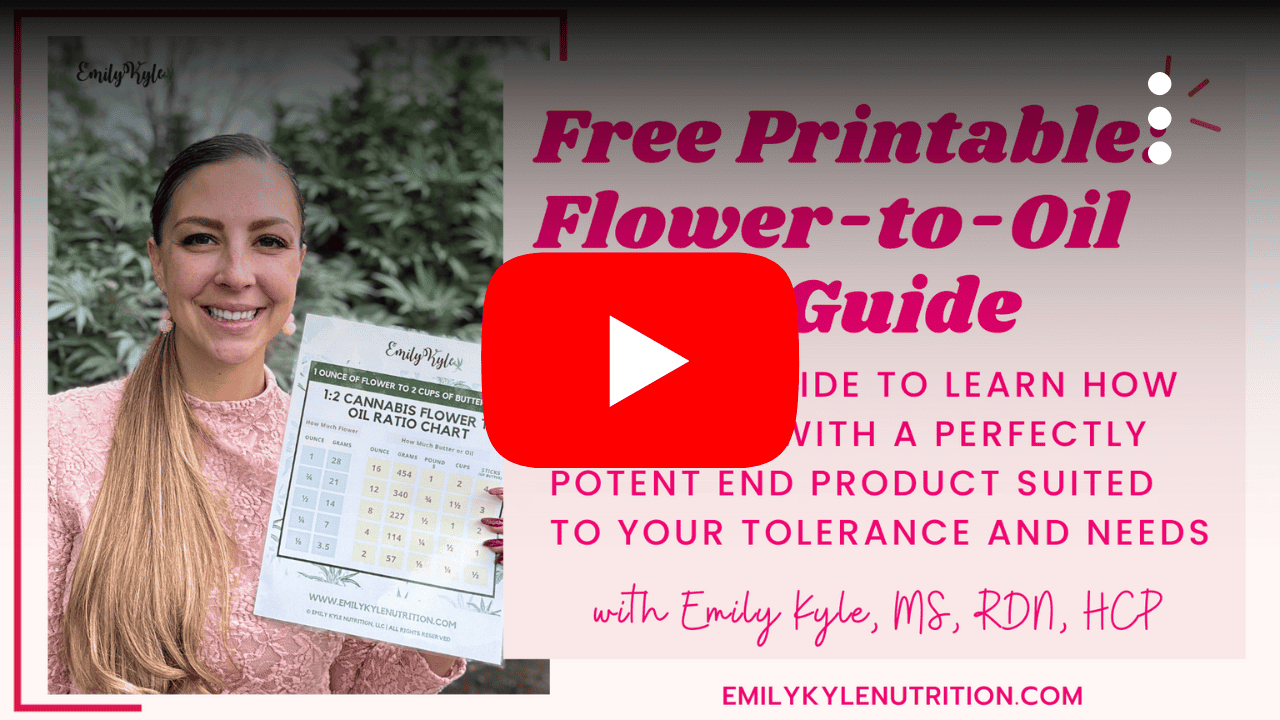
How to Use The Ratio Chart
The easy-to-use chart above will help you decide how much flower and oil to use based on how big you want your final batch to be.
This works for infusions made in a crockpot, Instant Pot, or even an infusion machine, depending on the capacity it can hold.
The chart has two parts: a 1:2 ratio (1 ounce to 2 cups) and a 1:1 ratio (1 ounce to 1 cup).
But which chart should you use?
One of the best parts about making infused butter is that you can make it as strong or mild as you prefer.
If you have a low tolerance or are looking for a small dose, you should use the 1:2 ratio chart listed first.
If you have a high tolerance or want a stronger dose, you can reference the second chart and use a 1:1 ratio.
For a 1:1 example, one ounce of decarboxylated flower will be mixed with one cup of butter.
This will create an infusion twice as potent as if you used the 1:2 ratio.
When deciding which ratio to pick, consider your tolerance, and if you’re new to edibles, be sure to follow the golden rule of “start low and go slow.”
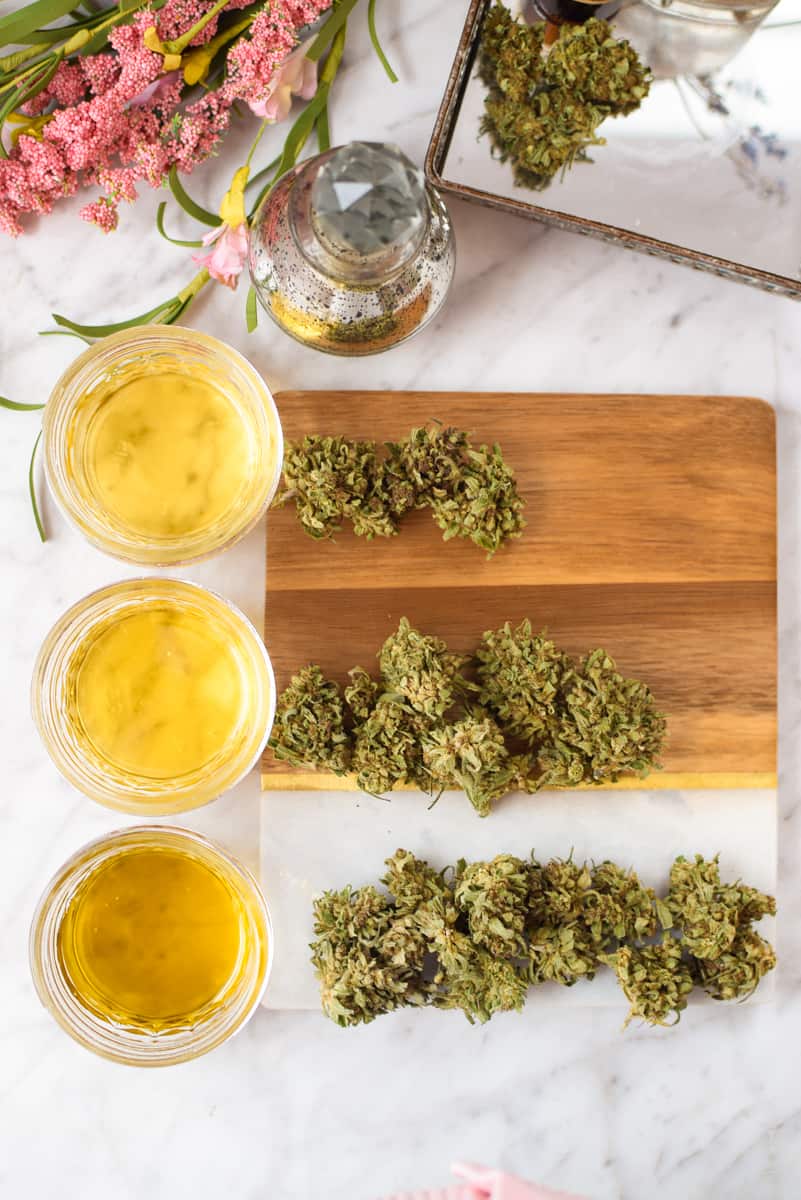
Other Factors to Consider
As a general rule, it’s essential to know that the more cannabis flower you add to your infusion, the more potent your edibles will be.
You can also increase the potency by decreasing the amount of oil or butter to get the same effect.
My flower-to-oil ratio chart above breaks it down so you can easily and accurately mix the right amounts – but there are a few other factors to consider.
The Potency Of The Flower
While the amount of flower and oil you use matters, so does the potency of the flower you use.
Cannabis flowers can contain 0-30% cannabinoids or the important compounds we want, like CBD, CBG, and THC.
Different strains can have different percentages of cannabinoids. Without lab testing, it is impossible to know this exact number.
If you purchased cannabis from a dispensary, it should come with a lab report or printed number stating the total percent of cannabinoids in the product.
If you grew your flower and know the strain you used, online resources like Leafly should be able to give you an average percentage of what the strain typically produces.
Remember, the higher the percentage of cannabinoids, the more potent the final infusion will be.
If You’re Working With Trim
The chart above was designed with the thought that you would be using traditional cannabis flower buds.
But what if you want to make an infusion with trim or shake?
If you’re working with trim, I recommend doubling the amount of flower in the cart.
This is because trim, like fan leaves or sugar leaves, is typically less potent than flowers, so doubling up on the amount will help keep the potency higher.
Of course, this is just a rough guesstimate and will again depend on the strength of the flower and your personal tolerance.
You can repeat the same process if you work with CBD flowers to make CBD cannabutter.
If You’re Working With Kief
Again, the chart above was designed for using cannabis flower buds.
However, if you’re lucky enough to have collected a nice amount of kief, you can easily infuse it into butter or oil.
If you’re working with kief, I typically recommend you *at least* halve the amount of “flower” in the cart.
This is because kief has the potential to be anywhere between 50-70% more potent than traditional cannabis flower due to its high trichome content.
Take care when preparing kief oil or kief butter, as they can be very potent depending on how they are made.
A Calculator Can Help
While it is no substitute for lab testing, an online calculator can help you determine the potency of your final product.
For this to work, you will need to know the potency of the material you are working with or at least have a general idea.
You can input values into my edibles dosage calculator and see the final potency before infusing.
Determine The Dose
Want to get a more accurate guesstimate of the potency of your cannabis infusions and extractions? Try my popular edibles dosage calculator. Not sure what your perfect dose is? Learn more here.

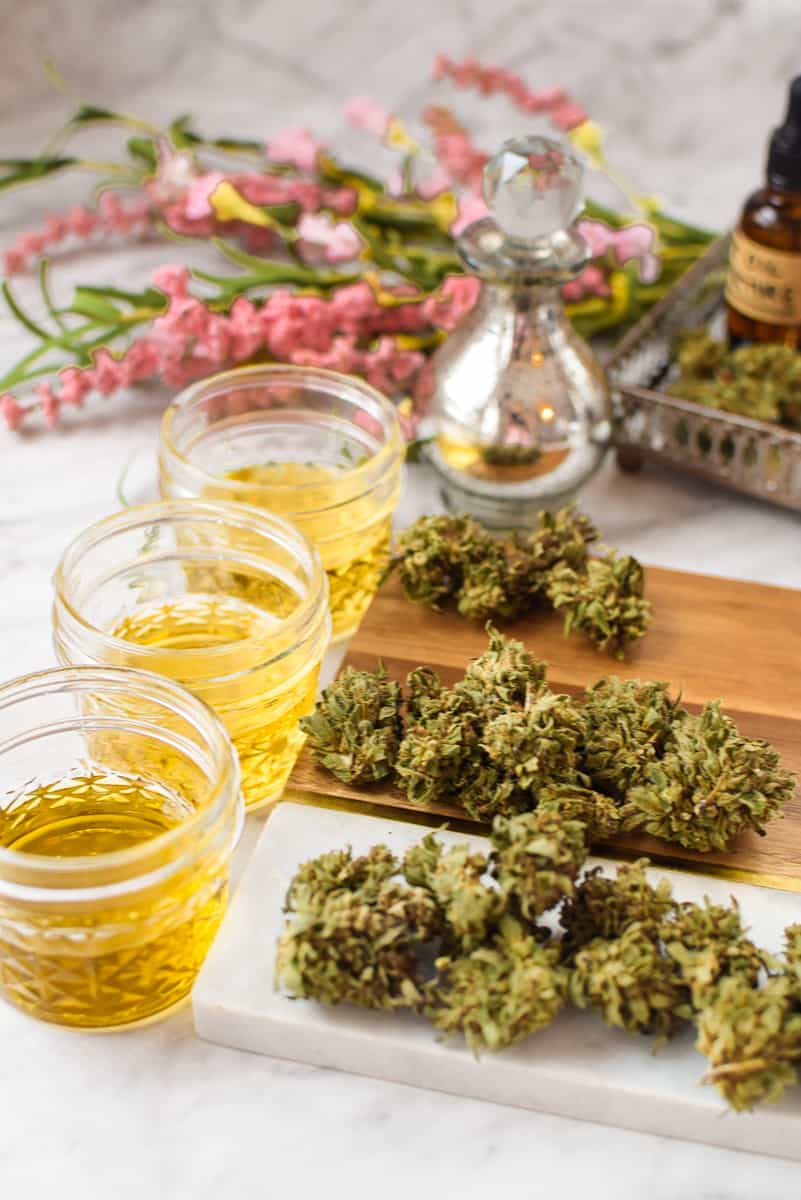
Get To Know Your Tolerance
By changing the amount of flower to oil in your recipe, you can manipulate the final product to be as potent as you’d like.
The more flower you use, the more potent it will be. The more oil you use, the more you will dilute the infusion.
Since cannabis affects everyone differently and the endocannabinoid system is highly individualized from person to person, it’s essential to know your tolerance level.
Cannabis enthusiasts agree that the best way to consume THC edibles safely is to “start low and go slow.”
That way, you are less likely to experience the unpleasant side effects of too much THC consumption, like anxiety and paranoia.
It’s always advised to start with a low flower-to-oil ratio for your first batch of edibles and see whether it meets your needs.
If it’s not as potent as you’d like, you can try a stronger ratio next time.
To find the perfect ratio for your tolerance level, experiment with different amounts of cannabis flower and oil.
Once you’ve got the right potency, you’ll be able to make all kinds of edible recipes at home on your own.
Traditionally, cannabis brownies are a fan favorite, but you can make anything from cookies and candies to no-bake edibles and more with your infusions.
Whether you’re just beginning your journey into homemade cannabis-infused treats or if you’re a seasoned baker, this flower-to-oil ratio chart will help as a quick guide.
Conclusion
In wrapping up, I want you to embrace the flexibility and control that homemade infusions offer.
Not only do they provide a cost-effective alternative to store-bought edibles, but they also allow you to fine-tune the potency of your recipes to fit your specific needs.
Remember, the quality and potency of the material you start with and the precise ratios of flower to fat play an important role in determining the strength of your final product.
Using tools like my edible dosage calculator can offer a rough estimate of the potency of your final product, helping to avoid the common pitfall of overly potent or underpotent edibles.
Now that you’re ready to make your own infusion, it is time to get excited about the variety of recipes and products you can create.
The possibilities are endless, from classic brownies to savory dishes and even non-bake treats.
Enjoy the process, stay curious, and here’s to creating delightful, potent, and, most importantly, safe cannabis-infused treats right from the comfort of your own home.
And, don’t forget to download you free printable copy of this chart below!
More Guides You Will Love
Articles & How-To Guides
Cannabis Terms & Abbreviations: Free Printable Guide
Articles & How-To Guides
The Most Accurate Edible Dosage & Potency Calculator
Articles & How-To Guides
A Beginner’s Guide to Cannabis Edibles
Articles & How-To Guides

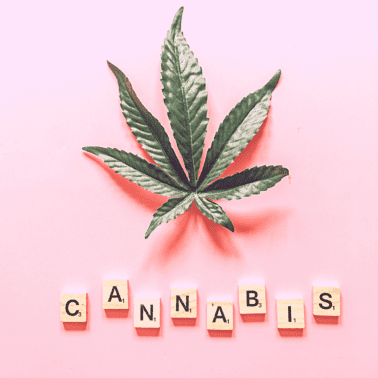
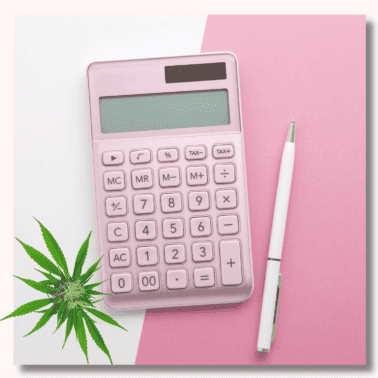
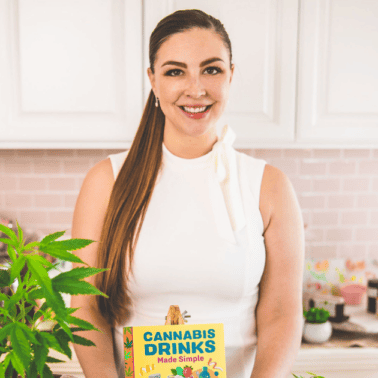
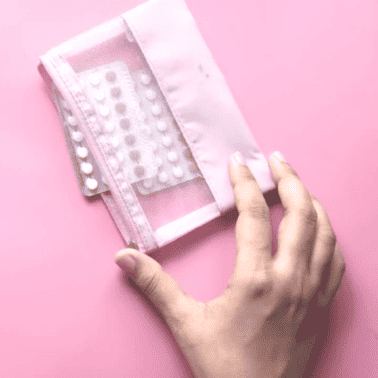
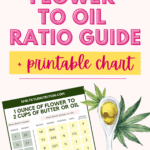








Hi Emily, let me start by saying I just love your website and your recipes. Fairly new here at making edibles. I’ve done brownies a few times with canna butter and they always come out well. I recently made canna infused MCT oil using an Infuzium 420. The MCT oil came out very dark and when filtered quite a bit of sediment in the oil. Suggestions? My ratio was 1/4 ounce to 1 cup oil. I decarbed as usual.
Hello Heidi, thank you so much for your kind words. I don’t have one, so I don’t know, but does the Infuzium 420 have a grinder or a blade that chopped up the material during the infusion process? If so, that is the culprit. The grinding introduces excess chlorophyll into the final product, making it taste and look super green. This is why I don’t recommend grinding before making infusions.
Do you know of any articles about using unstrained cannabis coconut oil / butter for edibles?
I’m a student and on a budget, but I’ve been doing some experimenting with edibles, and I find that if I’m making something like Brownies or chocolate cupcakes, I can use unfiltered oil, basically following your coconut oil recipe but not filtering it through the cheesecloth at the end, leaving the ground bud mixed with the oil.
I find this produces more potent edibles, and has a minimal impact on taste for some recipes (like adding ground flax). Are there any reasons besides taste/texture for filtering the oil?
Hi Kyle. It all comes down to a matter of preference and if you’re okay with the taste and texture, than you’re good to go! Consuming the whole plant offers the most benefits!
Hi and first of all thanks for all the great info and content on your page!
Since you can’t reduce/concentrate the oil afterwards and I’d like to make it as potent as possible without using concentrates (rso,feco etc.), I’m curious can you actually fit 1oz of decarbed bud into 1cup of oil?
Also, I saw someone ask can you “oversaturate” the oil i.e. can you add too much flower into the oil, and I’ve seen a study that used sesame oil and it stated that you can dissolve 300mg of THC into 1 ml!
So yeah, there should be plenty of room in there and I would assume that applies more or less to all oils. With pure ethanol it’s over 1000mg/ml!
So it’s really a matter of how much solvent you need to at least cover the material you’re using, and that’s the limiting factor. And ethanol you can always reduce/concentrate afterwards, but oil you can’t. Concentrates are then needed to make super potent oil. And that goes back to my original question..I guess I’m just curious and slightly skeptical..can you really cover 1oz of bud with 1cup of oil?
Hi M-P! We’re thrilled to hear that you’ve found our content informative and useful! It’s technically possible to fit 1oz of decarbed bud into 1 cup of oil, but it would be quite a tight squeeze. The key here is to ensure that the plant material is fully submerged in the oil to allow for optimal extraction of the cannabinoids. If your cannabis isn’t fully covered by the oil, you may not get the full potency from your batch.
As for the saturation point of THC in oil, you’re correct that studies have shown it can be quite high, but we have yet to find exact figures.
I hope this clears up some of your concern! Happy cooking, and don’t hesitate to reach out any time.
Hi Emily, I am 71 years old and have done my share of cannabis over the years. Always smoking a pipe or a blunt. But now I cannot inhale smoke anymore so I received my NH medical card last November. The weed I now use is a home grown variety and I guestamate it as about 15-20 % THC, but No way to tell with out testing.
Anyhow, when I started looking for directions to making THC oil with MCT I came across your website. It is the most informative site anyone could ask for.Thank you for all the hard work you have done and still do for the better use of cannabis.
According to your oil to weed ratio if I use 1 cup of oil to 1 oz of cannabis, it is kinda weak for my uses. I only use it for insomnia and arthritis pain, not to get high. If I add 1/2 cup of oil to the ounce, it does not come up to the half-way mark of the weed inside the canning jar, thus,it seems weaker. I have a batch currently (1 oz of weed into 1 cup of oil), slow cooking in the instant pot.
I use 1/2 oz to a small jelly jar with 3/4 cup of oil for each 1/2 ounce. This is just enough to bring the oil level to the top of the jar. I am hoping this works out well for my use.I use a french press coffee pot for straining and it strains out every last drop of oil. best straining method I ever used. No mess, no fuss, just add the mixture and press.
Hi Larry. Thank you for your kind words and detailed feedback! We’re thrilled to hear that you’ve found the information on my website helpful in your journey with cannabis. If you’re finding the recommended ratio too weak for your needs, it’s perfectly fine to adjust it as you see fit. Using a French press to strain the oil is a fantastic tip, as it makes for a clean and efficient way to separate the oil from the plant material. Thank you again for sharing your experiences and insights.
Your chart is the most informative one I have seen yet. Question though, what about making hash oil – am I to assume that the ratio would be similar to that of the keif?
Hi Chris! In a nutshell, hash oil packs a stronger punch compared to kief, allowing for smaller doses. When making hash oil, the end result is a more concentrated product than kief. Kief is essentially the loose trichomes that have been separated from the cannabis flower. It’s quite potent in its own right, but it’s not as concentrated as hash. Hash is made by compressing the kief, resulting in a product that’s denser and more potent. And then there’s the process of making hash oil which creates an even more concentrated product. Does that make sense?